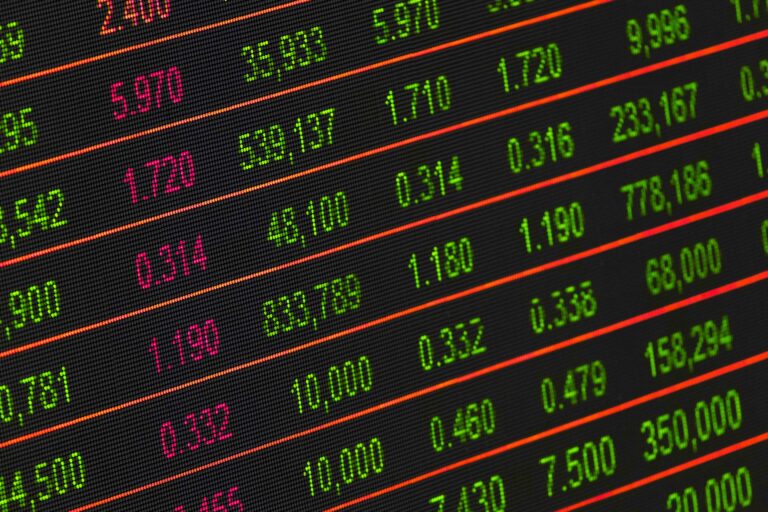S&P 500 Dividend Data
Stay up to date with the latest S&P 500 dividend information. This page provides key dividend data from the S&P 500 Index, allowing investors to make better decisions across equity and options markets.
| Name | Dividend Ex Date | Dividend Pay Date | Dividend Per Share | Currency | Dividend Impact (Estimate) |
|---|---|---|---|---|---|
| Domino's Pizza Inc | 15/12/2025 | 26/12/2025 | 1.74 | USD | 0.40% |
| HCA Healthcare Inc | 15/12/2025 | 29/12/2025 | 0.72 | USD | 0.15% |
| Devon Energy Corp | 15/12/2025 | 30/12/2025 | 0.24 | USD | 0.64% |
| Gilead Sciences Inc | 15/12/2025 | 30/12/2025 | 0.79 | USD | 0.64% |
| Crown Castle Inc | 15/12/2025 | 31/12/2025 | 1.06 | USD | 1.16% |
| Extra Space Storage Inc | 15/12/2025 | 31/12/2025 | 1.62 | USD | 1.22% |
| Iron Mountain Inc | 15/12/2025 | 06/01/2026 | 0.86 | USD | 0.98% |
| FedEx Corp | 15/12/2025 | 06/01/2026 | 1.45 | USD | 0.51% |
| Eastman Chemical Co | 15/12/2025 | 08/01/2026 | 0.84 | USD | 1.28% |
| Walt Disney Co/The | 15/12/2025 | 15/01/2026 | 0.75 | USD | 0.67% |
| DTE Energy Co | 15/12/2025 | 15/01/2026 | 1.17 | USD | 0.89% |
| Digital Realty Trust Inc | 15/12/2025 | 16/01/2026 | 1.22 | USD | 0.77% |
| American International Group Inc | 16/12/2025 | 30/12/2025 | 0.45 | USD | 0.54% |
| Intercontinental Exchange Inc | 16/12/2025 | 31/12/2025 | 0.48 | USD | 0.29% |
| Allegion plc | 16/12/2025 | 31/12/2025 | 0.51 | USD | 0.31% |
| Best Buy Co Inc | 16/12/2025 | 06/01/2026 | 0.95 | USD | 1.27% |
| Amphenol Corp | 16/12/2025 | 07/01/2026 | 0.25 | USD | 0.18% |
| Ecolab Inc | 16/12/2025 | 15/01/2026 | 0.73 | USD | 0.28% |
| Eversource Energy | 17/12/2025 | 31/12/2025 | 0.75 | USD | 1.11% |
| Camden Property Trust | 17/12/2025 | 16/01/2026 | 1.05 | USD | 1.01% |
| Huntington Bancshares Inc/OH | 18/12/2025 | 02/01/2026 | 0.16 | USD | 0.87% |
| Salesforce Inc | 18/12/2025 | 08/01/2026 | 0.42 | USD | 0.16% |
| Healthpeak Properties Inc | 19/12/2025 | 30/12/2025 | 0.10 | USD | 0.61% |
| International Flavors & Fragrances Inc | 19/12/2025 | 09/01/2026 | 0.40 | USD | 0.63% |
| Hewlett Packard Enterprise Co | 19/12/2025 | 16/01/2026 | 0.14 | USD | 0.58% |
| Broadcom Inc | 22/12/2025 | 31/12/2025 | 0.65 | USD | 0.16% |
| Cincinnati Financial Corp | 22/12/2025 | 15/01/2026 | 0.87 | USD | 0.53% |
| Danaher Corp | 26/12/2025 | 30/01/2026 | 0.32 | USD | 0.14% |
| Humana Inc | 26/12/2025 | 30/01/2026 | 0.89 | USD | 0.33% |
| General Electric Co | 29/12/2025 | 26/01/2026 | 0.36 | USD | 0.12% |
| American Tower Corp | 29/12/2025 | 02/02/2026 | 1.70 | USD | 0.94% |
| Illinois Tool Works Inc | 31/12/2025 | 09/01/2026 | 1.61 | USD | 0.63% |
| Fifth Third Bancorp | 31/12/2025 | 15/01/2026 | 0.40 | USD | 0.83% |
| Alexandria Real Estate Equities Inc | 31/12/2025 | 15/01/2026 | 0.72 | USD | 1.58% |
| AvalonBay Communities Inc | 31/12/2025 | 15/01/2026 | 1.75 | USD | 0.99% |
| Host Hotels & Resorts Inc | 31/12/2025 | 15/01/2026 | 0.20 | USD | 1.10% |
| Deere & Co | 31/12/2025 | 09/02/2026 | 1.62 | USD | 0.34% |
| Essex Property Trust Inc | 02/01/2026 | 15/01/2026 | 2.57 | USD | 1.00% |
| Federal Realty Investment Trust | 02/01/2026 | 15/01/2026 | 1.13 | USD | 1.14% |
| Cardinal Health Inc | 02/01/2026 | 15/01/2026 | 0.51 | USD | 0.26% |
| Equity Residential | 02/01/2026 | 16/01/2026 | 0.69 | USD | 1.14% |
| Cisco Systems Inc | 02/01/2026 | 21/01/2026 | 0.41 | USD | 0.52% |
| Bristol-Myers Squibb Co | 02/01/2026 | 02/02/2026 | 0.63 | USD | 1.23% |
| Air Products and Chemicals Inc | 02/01/2026 | 09/02/2026 | 1.79 | USD | 0.73% |
| Globe Life Inc | 05/01/2026 | 30/01/2026 | 0.27 | USD | 0.19% |
| GE Vernova Inc | 05/01/2026 | 02/02/2026 | 0.50 | USD | 0.07% |
| Dollar General Corp | 06/01/2026 | 20/01/2026 | 0.59 | USD | 0.44% |
| Erie Indemnity Co | 06/01/2026 | 21/01/2026 | 1.46 | USD | 0.52% |
| Agilent Technologies Inc | 06/01/2026 | 28/01/2026 | 0.26 | USD | 0.18% |
| Edison International | 07/01/2026 | 31/01/2026 | 0.88 | USD | 1.51% |
| Campbell's Company/The | 08/01/2026 | 02/02/2026 | 0.39 | USD | 1.37% |
| Intuit Inc | 09/01/2026 | 16/01/2026 | 1.20 | USD | 0.18% |
| General Mills Inc | 09/01/2026 | 02/02/2026 | 0.61 | USD | 1.32% |
| GE HealthCare Technologies Inc | 09/01/2026 | 13/02/2026 | 0.04 | USD | 0.04% |
What Is the S&P 500 Dividend?
The S&P 500 Dividend refers to the combined cash distributions made by the 500 largest publicly traded U.S. companies listed in the S&P 500 Index. These payments are typically made quarterly and represent a portion of a company’s profits returned to shareholders. Dividend data provides a strong signal of corporate health, income stability, and broader macroeconomic trends.
Does the S&P Pay Dividends?
Yes, the S&P 500 includes many of the most dividend-reliable U.S. companies, such as Apple, Microsoft, Johnson & Johnson, and Coca-Cola. While not every constituent pays a dividend, over 80% of the index companies currently do. These dividends are distributed based on individual company policies and aggregated to form the broader S&P 500 Dividend statistic.
S&P 500 Dividend Yield
The S&P 500 Dividend Yield is a key metric representing the ratio of total annual dividends paid to the current price of the index. As of 18/09/25, the S&P 500 Dividend Yield stands at 1.16%, indicating the annual return an investor might expect from dividends alone (not including capital gains).
This yield is calculated as
Dividend Yield = (Annual Dividends Per Share / Price Per Share)
Monitoring the S&P 500 Index Dividend Yield helps gauge market sentiment, valuation, and income opportunities. Historically, this yield has ranged between 1% and 3% in bull markets.
Which U.S. Stock Has the Highest Dividend Yield?
Within the S&P 500, the highest dividend yields are often found in sectors like utilities, energy, and real estate investment trusts (REITs). As of the latest data, companies such as Altria and Verizon are among those with the highest dividend yields. These are frequently sought after by income-focused investors, though high yields can sometimes signal elevated risk or stock price pressure.
Are Dividends Taxed in the U.S.?
Yes, dividends are generally subject to tax in the U.S. Most qualified dividends are taxed at capital gains rates (0%, 15%, or 20% depending on income), while non-qualified dividends are taxed as ordinary income rates. U.S. investors must also consider potential state-level taxes, and non-residents may face withholding taxes unless exempted by tax treaties.
Foreign investors in US stocks face a default 30% tax on dividends. For UK residents, the US-UK tax treaty cuts this to 15%, but only if they submit a W-8BEN form to their broker – otherwise, the full 30% still applies.
Why S&P 500 Dividend Data Matters for Options Trading
Dividend information is a critical component in options pricing—especially for American-style options, which can be exercised at any time before expiry. Here’s how dividends impact options:
Call Options
As a stock approaches its ex-dividend date, call options may drop slightly in value since the holder of a call does not receive the dividend unless they own the stock outright.
Put Options
Dividends can increase put option premiums since the underlying stock is expected to drop by the dividend amount on the ex-date.




